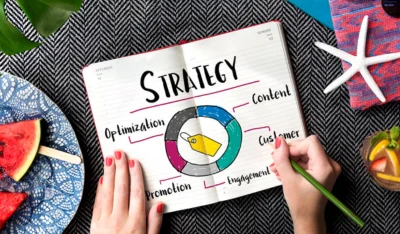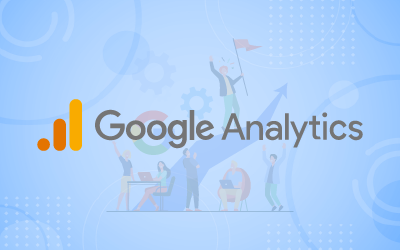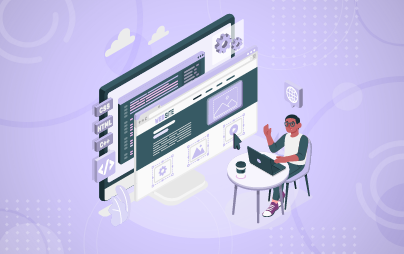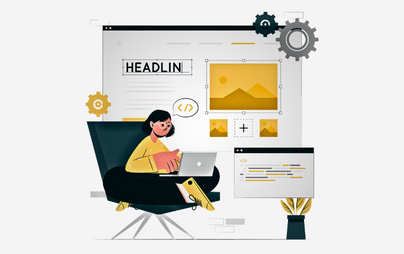In this discussion, corporations, especially those controlled via intelligent businessmen with a sturdy knowledge in website design and digital marketing, will get precious insights into the crucial synchronization of their website design with an all-encompassing marketing plan. The digital presence your internet site provides is vital as it is the first point of contact for your valuable clients. It is essential to make certain that your website design now not only looks best but also works properly to generate leads, conversions, and sales.
How can business owners make sure that their website isn't always only visually attractive however additionally works well to generate leads, conversions, and sales?
The only technique combines website design and advertising and marketing strategies. This challenging system calls for synchronization with marketing targets, audience options, and communication systems. Enterprises may additionally reap the benefits of a strategically integrated online presence with the aid of effectively combining the fields of website layout and digital marketing.
As a top Digital Marketing Advertising Agency and Website Design Company, we recognize the crucial feature of easily integrating these elements for business owners who are passionately worried in their online fulfillment. In this put up, we move into the complexities of web site design and advertising and marketing integration, inspecting how it is able to:
- Improve visual consistency and
- Ensure message alignment.
- Easily integrate the user journey.
- Align CTAs strategically
- Use promotional campaigns effectively
- Optimize for various marketing channels.
- Sync analytics to make educated decisions-making
By understanding the objectives and ambitions of company owners, we had been able to shine sensitively on the effective coordination between website design and digital marketing, graphically demonstrating how this combination can launch their creators to unforeseen heights in this digital era.
1-Creating Synergy among Website Design and Marketing Efforts

In the chase of a unified and effective brand presence, the symbiotic link among website design and advertising develops as an important consideration. Businesses must regard their internet site as a seamless extension of their entire advertising approach, rather than a wonderful entity. The following fundamental factors spotlight the significance of this integration:
An Extensive Approach to Website Development
Collaborative Venture: A holistic method to website development includes a coordinated attempt among website designers and digital marketers to make certain that the layout of webpages suits the overall advertising targets.
Refined Aesthetics: Emphasizing that it is more than just appearance, this approach attempts to design a website that does not simply appears top notch but also performs well real time.
Collaboration to Improve Effectiveness
Cross-Functional Teams: Collaboration between web page layout designers and digital advertising and marketing teams is vital. An organization that effectively incorporates those teams is professional at designing a internet site that corresponds with marketing targets and functions admirably.
Effective Communication Strategies
Optimized Brand Message: Use appropriate tone, style, and website content to successfully carry the brand message throughout the website.
Showcasing Unique Propositions: Highlight items, services, trust factors and testimonials to demonstrate particular promoting points, USPs, cost propositions, and competitive advantages.
2-Creating Visual Consistency to Enhance Brand Recognition

Visual consistency is critical inside the development of a robust and noteworthy brand persona, which incorporates matching web site design with predefined marketing assets. This alignment includes using the equal colors, fonts, logos, media and visuals across both structures. The following primary factors highlight the significance of visible consistency:
Improving Brand identification: Create an awesome and identifiable visual identification to boom brand identification and remember to use same assets(colors, fonts, logos etc.) as mentioned before.
Strategies for Visual Consistency
Adhere to Brand Guidelines: By following inserted logo recommendations, you can make sure that your website design is steady with the whole brand identification. Consistency in colours, typefaces, and art work across all structures strengthens logo and brand identification.
The Importance of Responsive Design: Responsive layout guarantees a visually attractive and consistent revel in throughout numerous devices such as desktop, mobile, TVs and tablets. It is not just about functioning, however additionally about retaining a consistent visual language across multi devices.
3-Ensure Messaging Uniformity across Points of contact
Messaging alignment is important for a unified brand messaging, requiring consistency in website content material and advertising and digital marketing initiatives. This includes the usage of the same terms, texts, and slogans throughout all structures to sell company values and convey a consistent message throughout. The following vital points emphasize the necessity of message alignment:
Unified Communication for Brand Reinforcement:
Consistent Language: Ensure that the language used on the website is consistent with the messaging in advertising and marketing substances. Use professional language translations services if required but auto-translation services are not recommended due to various issues like accuracy, quality and privacy. Consistency is the key in communique that facilitates to enhance brand messages, values and create a memory for customers across multiple channels of communication.
According to a study by Forbes, 71% of consumers feel frustrated when their shopping experience is inconsistent across channels.
Avoiding false impression: To keep away from false impression and contradiction, make sure that internet site, social media posts and advertising messaging are correct, synchronized, up-to-date and regular.
According to a statistics by SaaSworthy, sales and marketing misalignment can cost businesses more than $1 trillion each year, while aligned teams can increase revenues by 4% to 8%.
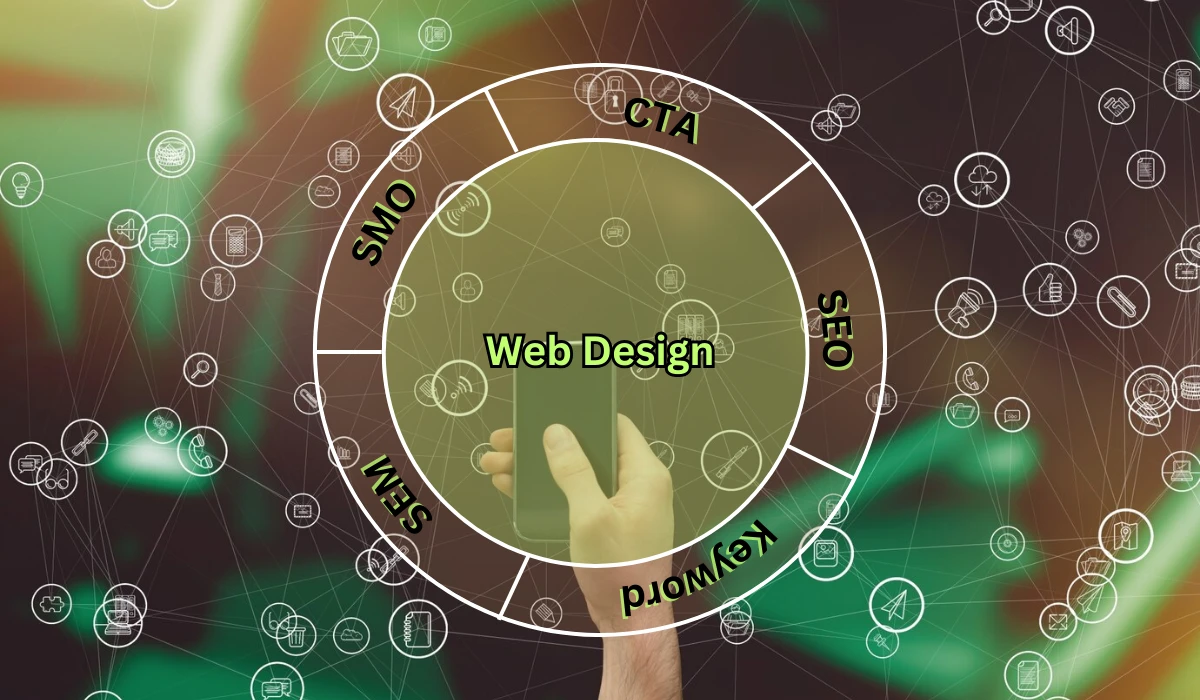
Strategies for Messaging Alignment
Keyword Integration: Use highly relevant keywords in website content such as text, titles, meta descriptions, and headers to appeal to both your target audience and search engines. Understand that your clear, appealing brand message cannot be given up to achieve abstract SEO aims. There's no point "hooking" search users just to provide bland, unnatural, bullet-pointed crap. What you can do is showcase your message such that keywords appear naturally at critical points throughout the text. However, stuffing product names, services or taglines indiscriminately will result in marketing nonsense that no one considers real or even credible.
According to a statistics, keyword integration can propel organic traffic by 300% and increase conversion rates by 14.6%.
Search Engine Optimization(SEO) Integration Benefits: Use SEO integration in the website content and other places like headings, footer, menu, header, sidebars etc. after sharing the SEO strategy with your web development team to increase visibility for users, existence in all search engines database, and ensure that messaging is effectively aligned and optimized with various search engine algorithms. Aside from this theory, your website must approach your viewers as individuals rather than demographics or sales persons. That is why there is a saying that SEO is a tool and not a rule.
According to statistics, SEO can generate 1000% more traffic than organic social media traffic and can increase brand awareness by 80% compared to others.
4-Optimizing the User Journey for Enhanced Conversions

It is found that the alignment of the customer journey on a website with the customer targeted inside your advertising campaign whether it social media or other digital platform, is essential for effective conversions on all channels.
This integration includes developing a clean and logical navigation design that walks clients through the diverse ranges of the client's journey across all channels. The following crucial factors highlight the necessity of customer journey integration into your website design:
Seamless Navigation for User Guidance:
Seamless User Journey: Verify that the user journey on the website seamlessly directs customers to the correct activities step by step as per your predefined strategy for conversions or any other actions. Ideal customer journey include the inviting and easy to use design, quickly loaded pages, clear calls to action, passwordless sign-in process, and smooth checkout experience within a few steps. Strategically positioning facts, quotes, content and layout additives(arrow marks, call-to-actions etc.) improves the general consumer journey and allows you to attain marketing objectives.
The SaaSworthy research highlights that simplicity can be more valuable and customer loyalty promoter for the brand, which strikes a chord with 64% of customers ready to pay more for simplicity.
Strategic Placement for Conversion Actions: Analyze the customer’s journey and punctiliously arrange CTAs, simplify the overall navigation systems in website, and deliver a clean route to your desired movement to guide visitors what to do next and thus enhance the website's conversion percentage.
It is 5 times more expensive to find new customers than to retain existing ones. An effective customer journey optimization can increase customer retention by 1.7x and customer satisfaction by 1.6x.
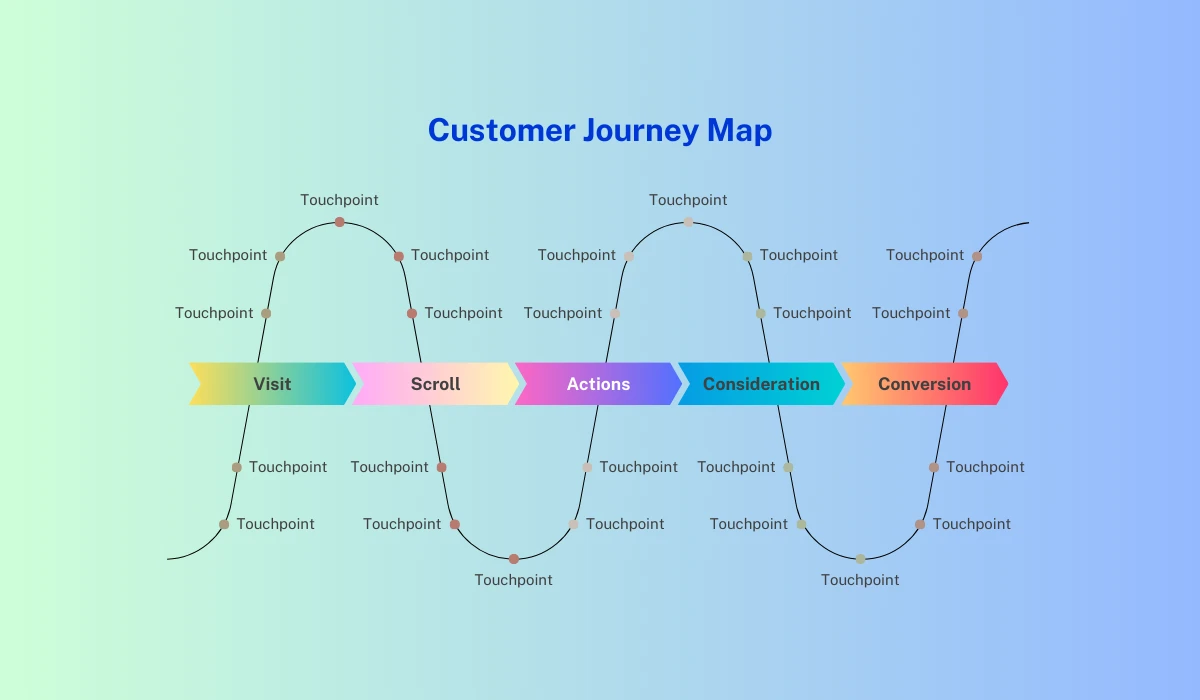
Strategies for Optimizing the User Journey
Clear and Logical Navigation: The most important thing is to create a simple and logical navigation strategy for your website visitors to optimize the website's user experience(UX) and conversions which can be achieved by mapping out the customer journey by gathering data from analytics and inserting ideas about known customer pain points and creating opportunities. Once the pain points and opportunities for improvement have been identified, businesses can prioritize these changes into the customer journey and also make data-driven decisions to drive conversion and improve the overall customer experience.
Do not make your website visitors confuse with multiple navigation systems for different endpoints/purposes within a website. Think of independent pages or sections rather than the common pages and sections, if it is necessary to go through multiple directions for multiple steps for a single user to follow.
According to statistics, clear and logical navigation can reduce bounce rates by 50% and increase page views by 21%.
Guidance Throughout the Buyer's Journey: Formulate the message on your website that would be relevant and memorable among target audiences, full and clear instructions, followed by right call to action as your tactic to user journey through your digital marketing strategy and data insights. If you want to make several user journey strategies for different goals, you may use and review some different data analytics dashboards such as Google Analytics path and funnel exploration.
The understanding of the challenge along with the guidance across the customer journey may increase conversion rates by 29% and quota by 11.8%.
5-Providing Identical Calls-to-Actions Across Channels
To achieve most fulfilling customer engagement rate and conversion rate, Call-to-Action (CTA) alignment is vital, necessitating consistency between digital marketing and website design strategies and thus collaboration among website developers and digital marketers. This collaboration results in designing attractive CTAs with common language that align with advertising and digital marketing goals, testing the same and optimizing them for multiple devices, and also making sure of the strategic placement within the website design with respect to the purposes they serve. The following fundamental points display the importance of CTA alignment:
Placement for User Guidance:
Strategic CTA Placement: Ensure that proper call to actions(CTAs) are carefully placed across the website design at the right context to synchronize with the user journey suitable for maximum conversions and also to serve as a guidance for customers to recommended activities which can include obtaining a quote, making a purchase, calling a number or subscribing to a newsletter etc.
According to a study by HubSpot, email CTAs get an average click-through rate(CTR) of 3-5%, while CTAs in a website that are aligned with the buyer’s journey can increase conversion rate by 42%.
Adapting for Different Devices: Reduce errors, personalize CTAs and increase website speed and responsiveness of CTAs via testing and tweaking CTAs for diverse devices, browsers, and screen sizes and also targeting customer geo-location and market demands. Just pay attention that your CTAs voice and message are sound and consistent with website general language and marketing content to maintain high quality user journey through the whole website.
As per HubSpot, after responsive design is employed, mobile user click rate is enhanced by 15% and CTAs that are personalized and targeted are 202% more effective than regular ones.

Strategies for Effective CTA Alignment:
Create compelling and targeted CTAs: Increase website conversion rate by way of creating very appealing and personalized call-to-actions that align with your marketing goals whether it is a form submit, scroll or a simple call button, and also cope with market and geographical necessities. You can analyze the mindset of target customers and then design more and targeted CTAs keeping in mind preferred messaging, color, placement and the purpose they serve.
According to Omnisend study, customers are 16x more likely to share news about their purchase on social media if they see a CTA button on the post-purchase page.
Strategic Testing and Optimization: Test and optimize CTAs for loads of devices, browsers, and platforms to maintain website peak performance without any issues. It can be checked through Google page speed analysis for free for any errors either in mobile or desktop.
SocialPilot study says, a clear and logical CTA can reduce bounce rates by 50% and increase page views by 21%, while a strong value proposition can increase conversions by 10%.
For example, changing the CTA button color from green to red increased conversions by 21% for one company.
6-Seamless Integration of Marketing Campaigns for Enhanced Impact
To maximize the impact of continuous marketing and advertising operations, businesses need to seamlessly synchronize their specialized promotional campaigns into their website design. This integration incorporates designing a website which is well matched with multiple digital advertising and marketing channels and prominently displays these promotions, discounts, or other unique offers on focus intensive sections of the website with consistent color and designs of different campaigns. Some design elements are:
- Creative Typography
- Captivating and Adaptable Hero Images
- Videos for the background
- Burger Menus
- Semi-flat Design
- Superior Product Photos
- Feature Videos
- Card Design
- Mobile-Friendly Design
- White Areas

The following elements emphasize this necessity:
Design Integration for Visual Impact:
Identical Design Elements: Ensure that the layout components of all digital marketing efforts are consistent and give similar look and feel, with the overall website designing, thus encouraging brand uniformity and increasing the effectiveness of advertising campaigns by imposing a strong memory within customer’s mind.
Uniformity is website design gives your visitors a sense of control while utilizing a service or product while also making the results of their activities more predictable. That's why website design elements consistency is so important when developing websites. According to study by Infront, consistency in website design can increase brand recognition by 80% and revenue by 23%.
Visual Consistency: Customers who have already bought from you before will react favorably to the same design features that could have inspired them to buy from you in the first place. It indicates to them that they will receive exactly what they see, and if it is successful the first time, they are likely to stay loyal buyers.
Keep the visuals like color codes, special elements, menu, hero images, contact forms, layout, creative designs etc. unvarying for both your promotional campaigns and the primary website to reinforce brand identification and successfully create consistent visual memory.
Study says, Visual consistency can also improve user satisfaction, trust, and engagement.
Optimizing Landing Pages for Campaigns:
Dedicated Landing Pages: Landing pages are unquestionably the best tool for converting leads and an excellent approach to increase visitors, enhance SEO, and establish your brand. Create customized landing pages for promotional campaigns with design components that flow easily into the primary website keeping in mind the importance as these pages make a strong first impression for your target visitors. This gives an easy transition for customers and helps them recognize your brand while having better user experience.
Remember that landing pages have the least view time and engagement if not designed properly or with complex design and also drains your marketing budget significantly and quickly. Statistics show that landing pages can increase conversions by 86% and generate up to 220% more leads than regular web pages.
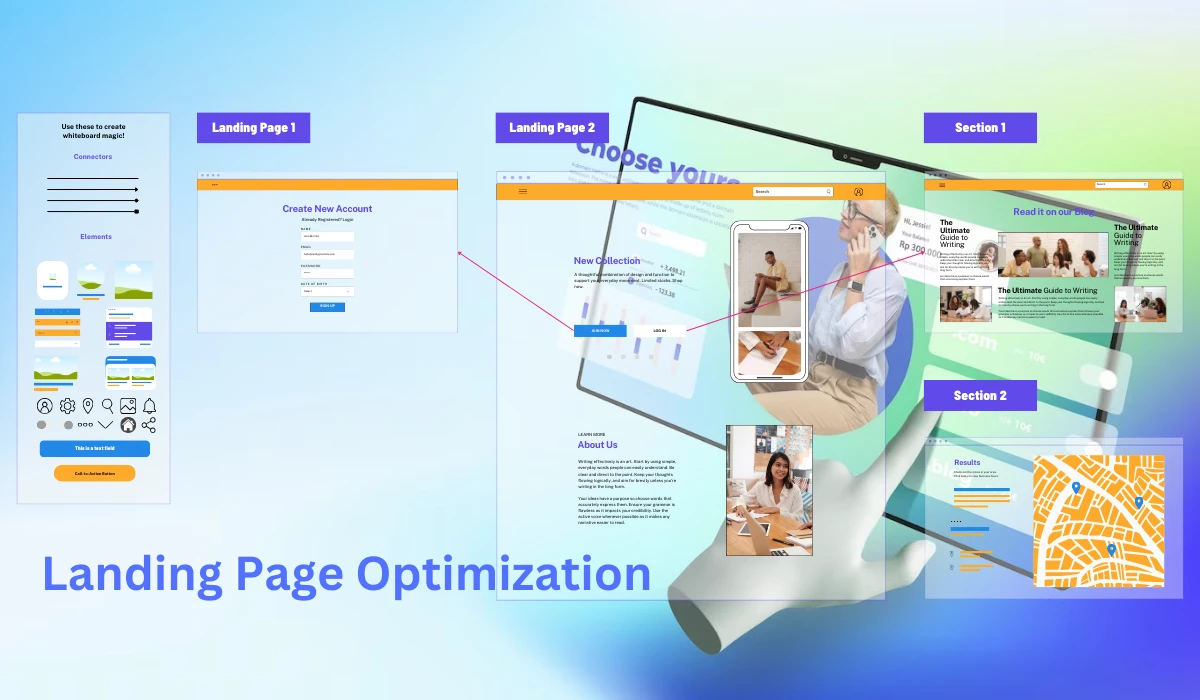
Strategies for Successful Integration:
Website Compatibility: Increase website traffic and visibility by means of making it adaptable and connected with several important advertising channels like social media, e-mail campaigns, search engines, and online classified ads. Regular website maintenance plays a huge role in that. Some other benefits include:
- Reduced Bounce Rate
- User Experience(slow page load, some page elements not properly displaying)
- SEO performance(keyword and content consistency)
- Uniform and enhanced Brand Identity
- Social Sharing facility and
- Adaptability for different devices and platforms
For instance, one of the digital marketing channels i.e. social media marketing if done right can generate 1000% more traffic than just organic social media posts, while another channel i.e. email marketing can yield $44 for every $1 spent for the same website.
Data Analysis for Improvement: Track and examine website and digital marketing campaign data to measure and enhance the achievements of your website and marketing efforts through insights provided by various analytics tools. Analytics also helps businesses understand the effect of changes made to the customer journey on key metrics such as
- website traffic
- page views
- time spent on each page
- bounce rate
- conversion rate
and thus overall customer satisfaction rate, further ensuring reliable tracking and analysis of user behavior across several digital marketing channels and providing improved insights into user interactions to adjust your next strategy for each channel.
In accordance to the Forbes's report, data-driven marketing can grow sales revenue by 19% and customer satisfaction rate by 55%.
7- Providing a Consistent User Experience (UX) across Marketing Channels

Strive to deliver a great online presence for your business through an uniform brand messaging, delivery, style and authentic brand voice as well as a responsive website design layout ( the design layout should be fully customized to all of your exclusive advertising channels be them Google, Meta, Bing and others). . This consistent, cross-channel, cross-device approach guarantees a seamless, recognizable and exciting customer journey across any channel or device for any customer. The following essential topics emphasize this need of responsive layout for digital marketing channels.
Multi-Channel Adaptability:
Maintains a Steady Brand Identity: Blog posts, social media updates, newsletters, and customer service interactions should be adapted to a flexible and responsive website layout that also adjusts to occasionally special advertising campaigns, which can include social media, e-mail, and search engines like Google and Bing. This means that regardless the platform users are using, they will have the same experience across different platforms/channels.
A study by McKinsey has shown that good uniformity of branding across all channels raises revenue by 23%, on average.
Uniform User Experience: In order to accomplish a unified brand experience a customer must be put first and the experience maintained. You cannot have one without the other. At the same time, if you don't implement the same strategy for your website, then your website visitors won't recognize your brand. Regardless of any digital marketing channel, clients get a consistent and good experience when presented with similar toned helpful content and visual designs without any lags or issues, which reinforces an unforgettable brand identity into their memory. Consequently, the shift from responsive design will contribute to organic traffic going up by 62 percent and the page views by 10,9 percent.
Mobile Optimization for a User-Friendly Experience:
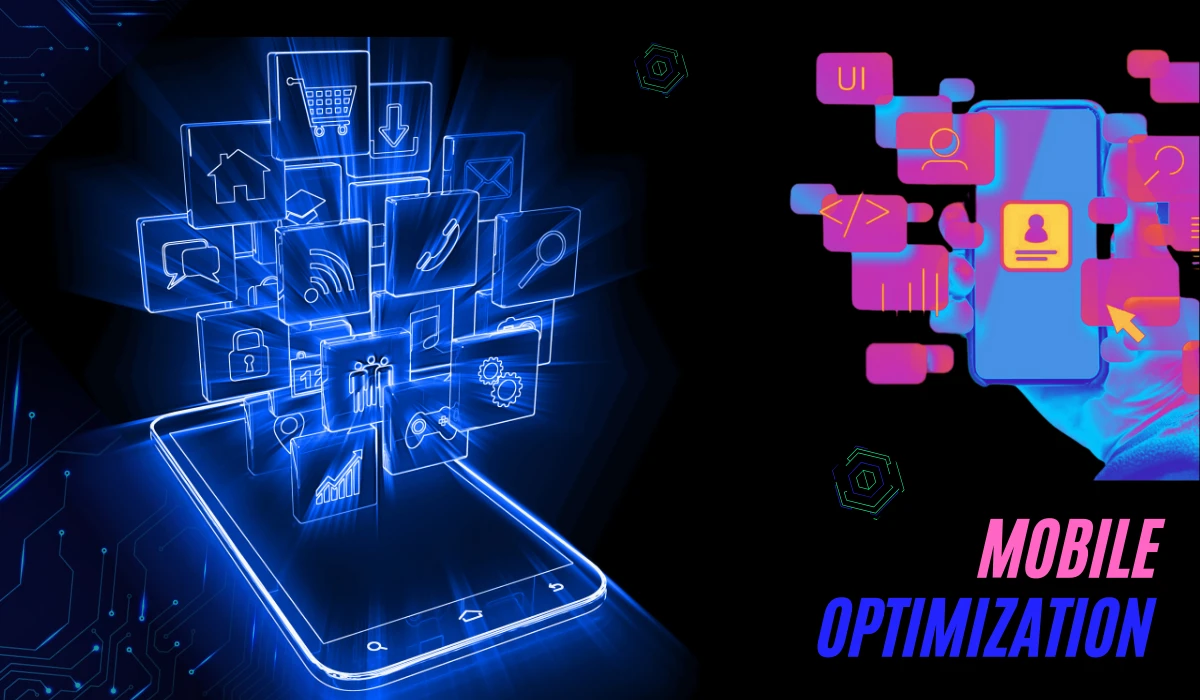
Optimized for Mobile Users: Mobile devices are gradually dominating the market, so the significance of the responsive design for the mobile visitors is dramatically increasing giving the opportunity to provide the general good end-to-end user experience to the number of customers who use their mobile.
For example, 75% of users are likely to return to mobile-friendly websites, while 40% of users will leave a site if it is not mobile-friendly.
Adaptation to Preferences: Customize website design and content material to help and satisfy the target audience's needs, tastes and expectancies across diverse advertising and marketing platforms, including mobile, computer, smartTV and tablet.
Strategies for Responsive Design:
Why we should choose Responsive Web Design:
- Reduced maintenance costs(single consistent version that works across all devices)
- More mobile and SmartTV traffic
- Improved SEO and Content Management with single URL
- Consistent Brand Awareness
- Faster page speed(Using file compression)
- Decreased Bounce rate
- Better User experience(UX)
- Higher Conversion rate
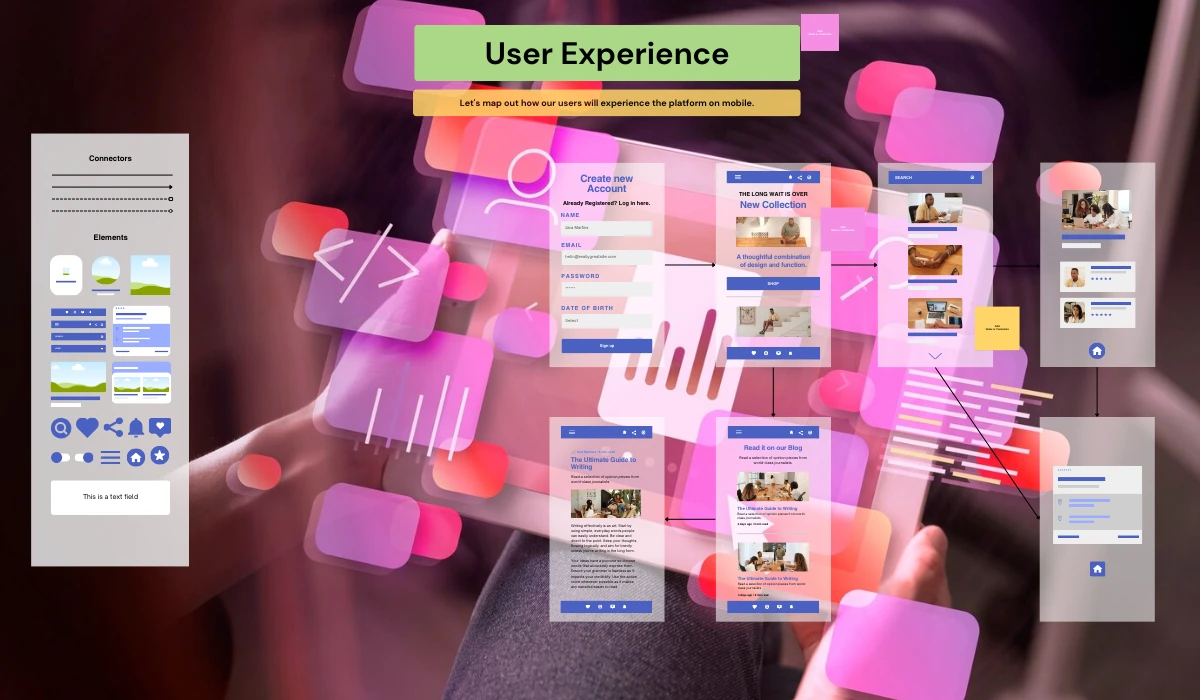
Access for All Potential Customers: You want to make sure that your website is accessible, viewed properly and provide value to potential customers, no matter what device, browser, or platform they use to access it, right? A mobile responsive design is an optimal option that is a good impact for your customers, as well as for your business which has to do with more mobile-customers, better UX, and better achievements.
According to some web design statistics, conversion rate increases nearly 11% via responsive designs but it is also reported that 62% of businesses have had the sales of their companies raised by responsive websites.
Tailoring to Audience Tastes: You also want to customize your website design and content to meet the audience’s interests and expectations across multiple digital marketing channels. By using data-driven insights and feedback from your customers, you can create personalized and relevant experiences that match their needs, preferences, and fulfill their objectives. This will help you increase customer loyalty, retention, and advocacy.
For example, 75% of users are more likely to return to websites that are mobile-friendly, and 72% of people prefer mobile-friendly websites.
8-Integrating Analytics for Informed Decision-Making
If you make web design decisions without considering the impact on analytics, you will not only miss out on valuable insights for your business but also impair your ability to effectively measure how well website features, blog text, and fresh content perform. As a result, you will be unable to make decisions that enhance performance, increase revenue, or attract new consumers.

Analytics-friendly design might include UX design, UI design, visual design, or a combination of the three. Analytics-friendly design aims to incorporate judgments that:
- Make it easy for search engines to interpret the page material
- Develop a logical website framework and structure.
- Work aggressively to obtain useful user data.
A little planning combined with sensible, analytics-friendly design decisions will boost performance and deliver crucial information. To achieve the best results, you need to integrate your website analytics with your broader digital marketing analytics data to get clearer and accurate insights (bigger the data, more accurate and reliable insights). The approach is all-inclusive and uses common measurement tools, platforms, and methodology for both the web designing activities and digital marketing initiatives. The following key points show the importance of analytics alignment:
Using Data-Driven Insights:
Integrated Analytics Tools: The analytics tools will be used in the measuring and examining user actions and conversions, tracking of the campaign success, and gaining the actionable reports with insights. It gives you an advantage based on data-driven strategy, which allows you to track effectiveness of website designing and digital marketing programs and, consequently and gradually optimize them to achieve desired results. For instance, you can be deploying conversion tracking to benefit from analytics in measuring the effectiveness of CTA’s strategy, level of engagement, or mapping a user’s complete journey.
Continuous Improvement: To reap the benefits from data-driven insights and recommendations, it is necessary to critically examine the existing gaps, loopholes and areas for improvement, which will lead to increase in website’s performance and digital marketing effectiveness. The analytics data and user feedback that you get will allow you to optimize your site as well as the digital marketing campaigns, hence improving the experience of the user (UX) and at the same time increasing the conversion percentage.
For example, A/B testing can help you find the optimal CTA design, color, size, and placement for your audience.
Knowledgeable Decision-Making: You are in the need of conversion tracking tools to help you improve the quality of your users’ experience and the performance of your campaigns. The use of data such as device, language, age, interest, location, help you define the target audience, track your website traffic along with marketing goals, and make the necessary changes in your digital marketing strategy.
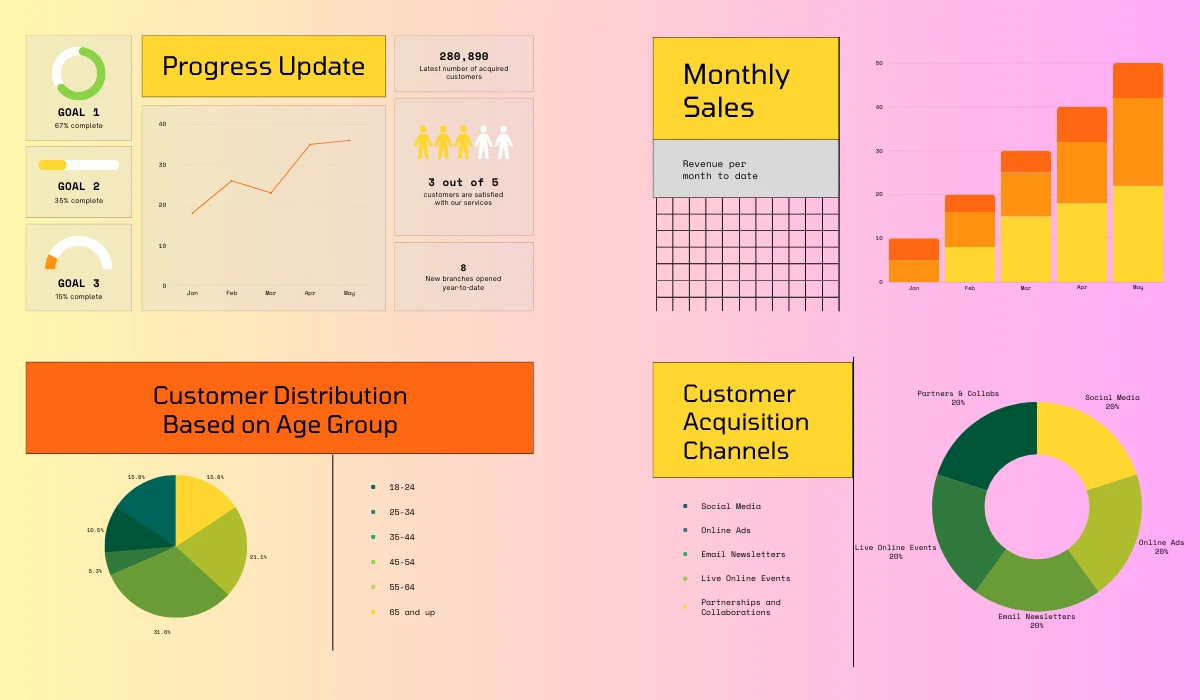
Most important uses of Google Analytics:
- You can use Google Analytics to monitor your website traffic, bounce rate, page views, and conversion rate to determine which pages are popular and which are not.
- You use Google Analytics and its ability to not only facilitate your website but also other marketing channels - social media, email, search engines and online ads - therefore get one place where all the data and performance of each channels are analyzed.
- Google Analytics may turn out to be a great instrument for implementing your strategy related to relevant and targeted content making sure both your website and digital marketing campaigns are most appealing to your audience.
Optimizing with Insights: It is your responsibility to align all the analytics processes and so on and to make it “data-driven” in order to make further improvements and right changes to website design and digital marketing strategies based on the recent results. The utilization of data and analytics will lead you to learn valuable insights at the very time when you need to discover new leads, identify best practices and place you a step ahead of your competitors.
Summary
Website layout need to be aligned with advertising and marketing method so that it will create a regular and attractive brand presence that fosters client trust and loyalty. This holistic approach guarantees that each touch, whether or not through advertising channels or the internet site, suits seamlessly into the overarching brand story and objectives.
Importance of Integration: Alignment establishes a unified and appealing brand image for the customers who will have a higher chance of deciding on your brand and to be loyal to it.
Harmonious Interactions: Each of the actions carried out, i.e. marketing communications, advertising or website, cohesively contribute to the brand story and targeting.
Key Elements for Effective Integration
Visual uniformity: Making uniformity visible during the integration method step should be a priority.
Message Alignment: Maintaining the consistency is a must. Therefore, align your messages across all your websites and advertisement resources.
User Journey Integration: Associate the personalized experience on the website with the broader user journey plan that was established in the digital marketing strategy.
CTA Alignment: Make the CTAs consistent in terms of wording, design and formatting throughout all the platforms.
Promotional Campaign Integration: Easily encompass positive promotional campaigns into the general web site design.
Responsive Design for Marketing Channels: Modify the website design to be responsive throughout many advertising and digital marketing channels.
Professional Role in This Endeavor:
Professional Assistance: Seek the assistance of a ready website design and digital marketing company to complete the integration system.
Comprehensive Services: Professionals may help with websites layout, organic digital advertising and marketing services, and a number of different digital marketing needs.
Select Aarav Infotech for Excellence
Reliable Partner: Aarav Infotech provides responsive website design and digital marketing services.
Professional Team: Aarav Infotech's crew of professional web designers and digital marketers can help you in creating a terrific website that aligns together with your advertising targets.
Take Your Business to the Next Level:
Free Consultation: Contact Aarav Infotech now to get a loose session and quotation on your website design and digital marketing integration task.
Comprehensive Support: Aarav Infotech's experience in search engine optimization, PPC, social media, email, content material, and other areas can help you take your commercial enterprise to the next level.
Frequently Asked Questions

Written by: Jitendra Raulo
Jitendra Raulo is the Founding Director at Aarav Infotech India Pvt. Ltd., a leading Web Design and Digital Marketing Company with 11+ years of experience and having headquarter in Mumbai, India, and Support Centre at Bhubaneswar, India, he is actively working with Start-ups, SMEs and Corporations utilizing technology to provide business transformation solution.
